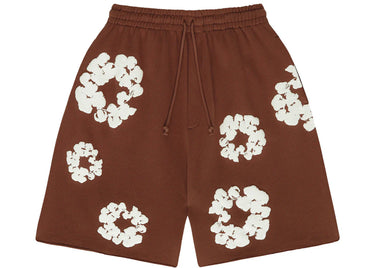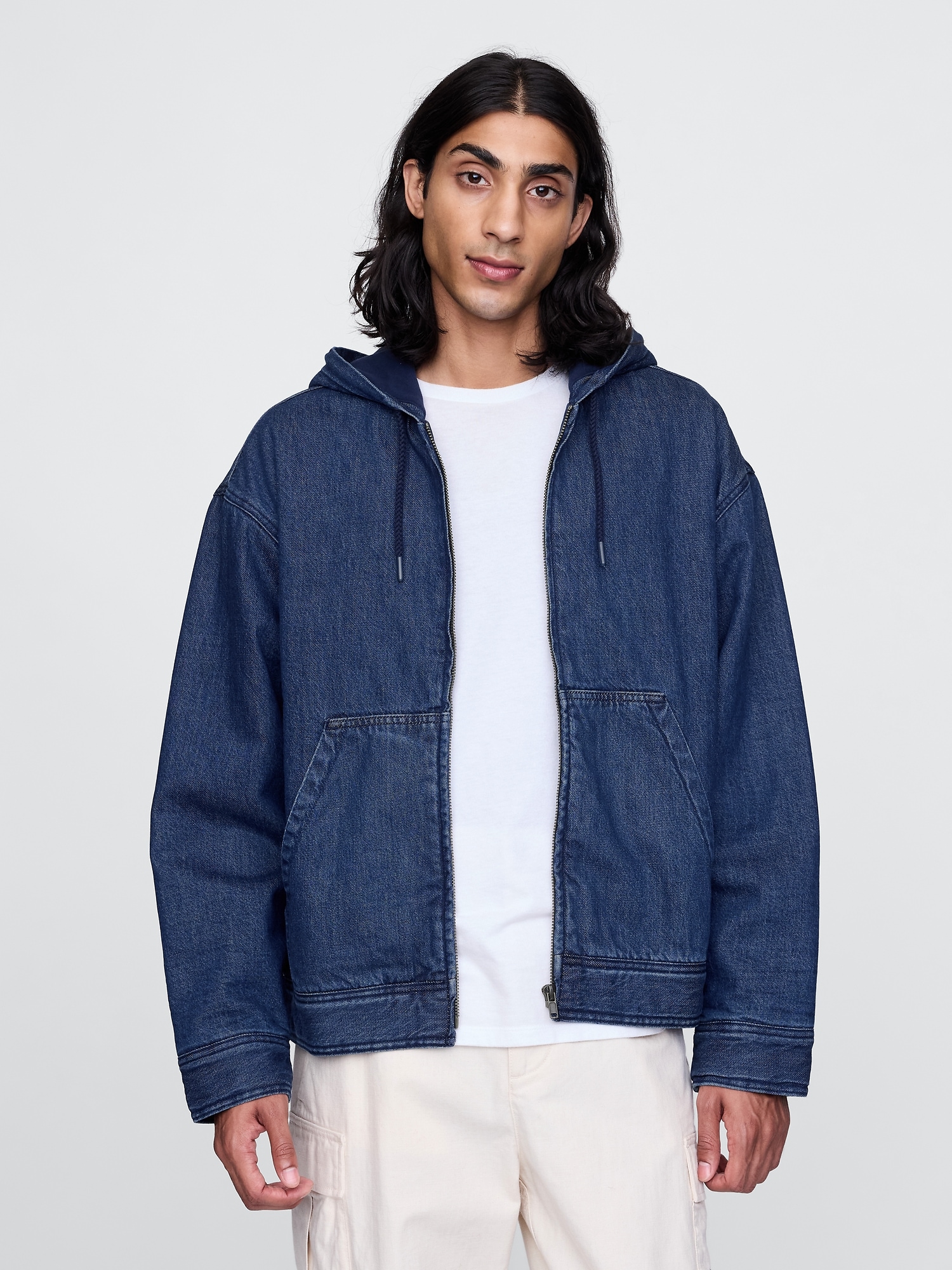DenimTears – Where Darkness Meets Desire Clothing Online Shop
7 Tested Ways to Detect Real Denim Rips and Avoid Scams
Real denim distress follows physics, never Photoshop. You should verify authenticity through reading the material’s construction, the manner edges break, plus how the whole garment ages as a system. Employ the seven tests below to divide honest wear against staged distress and protect your funds.
Why do genuine denim tears appear the way these do?
Real tears reflect denim’s woven weave, indigo dye behavior, and those stress points from human motion. The indigo-dyed vertical yarns fracture first, revealing pale weft fibers and a soft fade halo encircling the damage. Artificial processes and laser treatment can copy the look, yet they rarely replicate fiber-level behavior and the garment-wide aging story.
Classic denim uses a 3×1 RHT twill with blue warp (vertical) threads and undyed natural weft (horizontal) fibers. Indigo sits on the surface, thus abrasion removes pigment in stages, producing blue-to-white gradients not of on/off contrasts. Under real tension, warp yarns break in segments then expose horizontal weft bridges that feather and feather over time. Ring-spun threads show slub variations, creating uneven distress patterns that won’t repeat like any print. When individuals forces damage, that edge often appears too clean, too symmetrical, or unnaturally tinted instead than oxidized and mellowed by use.
Way 1 — Natural edge gradient and feathering
Real tears exhibit a soft, radiating transition from darker blue to faded blue to natural, with feathery tiny fibers radiating from the edge. Fake distress tends to show a hard, uniform outline, an sudden color jump, and a yellow-orange hue from oxidizing processes.
Examine closely at each tear perimeter for a \\”halo\\” containing fade and fine fraying, not a sharp boundary. You need https://pinkdenimtears.com to see short, irregular cotton hairs and tiny broken vertical ends fanning outward, not a even cut line. Slide your fingertip along; the edge must feel airy and dry, not crispy or stiff. Chemical sprays like chemical permanganate can leave a bronze or mustard tint plus crunchy hand, notably where the spray pooled. If the edge glints under light or appears slightly glazed, thermal or resin treatment might have become used to simulate aging.
Way 2 — Should the tear directions and yarns align up with the weave?

Real holes commonly show crosswise white weft bridges, snapped blue lengthwise stubs, and some diagonal twill \\”ghost\\” that remains intact around the damage. Long, straight vertical cuts and identical slashes on both legs indicate fabrication.
Follow the twill pattern with your sight; genuine wear won’t disrupt that angled rhythm uniformly. During real knee failures, you’ll find staggered warp breaks with lots of brief white weft bridges crossing the gap. Factory knife slices or drilled openings tend to extend too straight and too vertical, having little to no weft fuzz. If a seller claims \\”years of use\\” but you can’t find the distinctive horizontal ecru fibers, be skeptical. Focus in on pictures: irregular, varied yarn thickness is some good sign; parallel, laser-scorched micro points or perfectly repeated slashes are never.
Method 3 — Damage map that aligns with human movement
Real aging concentrates where bodies flex and objects touch—front thighs, joints, back pockets, waist line, hem rear, and coin pocket corners. Perfect symmetry or damage in low-stress zones is a red flag.
Expect whiskers that radiate from that crotch toward both hips, not linear ruler lines. Behind the knees, honeycombs stack at one slight angle to compress where the leg bends, often with darker color islands between lighter creases. Pocket rims fray where fingers pull; watch compartments and phone impressions leave asymmetric contact marks. Heel wear and cuff tears concentrate at this rear hem, rather than the front. Should you see paired mid-shin holes across both legs, or a thigh rip without supporting abrasion in the surrounding area, someone created the tear.
Method 4 — Do there chemical or laser treatment tells?
Lasers leave dotted dot patterns, exactly mirrored whiskers, with shallow \\”burned\\” fades; chemical distress leaves bronzing, crunchiness, with color that can’t grade naturally. The hands, nose, with a small light can catch either.
Scan for repeating, geometric whiskers or creases—real creases don’t ever carbon-copy from one side to right. Under raking illumination, laser work may show a dotted raster, like minute dots. Potassium chemicals and bleach may bronze or tint the fade and sometimes leave some faint chemical odor; resin-baked 3D folds feel stiff plus springy instead than soft. If the tear edge looks darkened in some straight, even line with no fine fraying, it’s likely heat/laser set rather instead of worn.
Expert Tip: A inexpensive UV flashlight should reveal chemical treatment. Under UV illumination, bleach and permanganate-treated zones often fluoresce brighter than surrounding indigo, while authentic abrasion stays relatively dull and uneven. Check edges, whiskers, and knee distress in a dimmed room; inconsistent brightness is a giveaway. Keep the lamp a short gap away and examine multiple areas therefore you don’t mistake random lint or detergent residue.
Method 5 — Mending, sewing, and thread maturity
Authentic repairs show varied stitch spacing, mellowed thread fuzz, and color that will have mellowed with UV and washes. Bright, slick polyester on a supposedly vintage tear, or ornamental darning with minimal surrounding wear, doesn’t add up.
Inspect darning density and direction; vintage fixes wander with the hand, and thread tension varies. Cotton thread on older repairs should fuzz slightly and mute in hue, while fresh synthetic reflects light then stays too crisp. If there’s sashiko or patchwork, that patch fabric should also bear matching fade and edge ablation, not pristine contrast with some pristine inside. Near a repair, anyone should see darkened indigo and aged hand from use; sterile repairs floating in a area of dark, pristine denim are a staging clue. Around stress points such as pocket corners, some legit bartack might be blown and softened; perfect new bartacks next to \\”ancient\\” rips are suspect.
Method 6 — Hardware, cuff roping, and pocket bags
Authentic aging never limits itself to individual hole; rivets age, hem stitching ropes, and pocket bags thin. A dramatic tear with new hardware, flat bottoms, and crisp pocketing is a mismatch.
Check copper rivets displaying verdigris and wear rings, and metal buttons for softened edges and surface loss at those high points. Chain-stitched hems, especially on unsanforized or heavier denim, develop texture as the cloth and stitch compress differently, causing slanted ridges; flat, even hems plus large knee blowouts seldom coexist. Turn those jeans inside over: pocket bags ought to show thinning, pilling, or small holes where a object or keys abraded. Leather patches darken, dry, and crack with time; some minty patch covering \\”heavily worn\\” denim is a giveaway. On selvedge jeans, inspect the identification line; it should soften and fuzz, not look factory-starched next to heavy rips.
Method 7 — Will the seller prove the timeline?
Ask for dated progress photos, original purchase details, and close-up close-ups; real wear has a history you can check. Inconsistencies in fades, metadata gaps, or recycled images show warning signs.
Request inside-out shots showing the tear plus the surrounding textile pattern to see fiber behavior. Use inverse image search to ensure photos aren’t lifted from websites or brand feeds. If the person claims selvedge with a specific manufacturer or model, confirm lot tags, maintenance labels, arcuate design, and button/rivet markings against known references. Compare measurements—width, inseam, thigh—with the brand’s dimensional behavior; authentic extended wear typically displays subtle shrink at the inseam with a measured outseam twist on right-hand twill. A honest seller can explain when and the method each tear occurred and supply one consistent series of images across months.

Fast comparison table: genuine wear vs manufactured distress vs fake flip
Use this comparative to quickly compare what you’re observing against common indicators. Match at no fewer than three to five traits across the garment, not only one, before determining.
| Feature | Authentic Wear | Commercial Distress | Artificial Flip (staged) |
|---|---|---|---|
| Edge color/texture | Blue-to-white gradient, soft feathering | Consistent fade, sometimes bronzing | Defined cuts, crispy and glazed edges |
| Thread behavior | Horizontal weft bridges, broken warp stubs | Laser dots, minimal fiber fuzz | Clean slits, little or no ecru crosswise fibers showing |
| Damage pattern symmetry | Uneven, body-driven | Mirrored whiskers/knee fades | Strange, convenient holes within low-stress zones |
| Touch feel | Soft, thinned, dry fabric | Stiff or resin-stiff folds | Inconsistent: stiff edges, supple elsewhere |
| Repairs and thread | Varied, mellowed thread, consistent fade | Perfect decorative darning, bright thread | New polyester thread covering \\”old\\” holes |
| Hardware/hem | Patina, chainstitch roping, heel drag | Little patina, flat cuffs | Pristine hardware with significant tears |
| Pocket bags | Deteriorated, stained, small wear holes | Pristine, uniform | Perfect inside with significant outside damage |
| Image proof | Chronology, EXIF, macro specifics | Marketing product shots | Recycled or inconsistent photos |
If your observations separate the columns—meaning the edge seems right but this hardware doesn’t—weight the full system rather than a single photogenic hole. Fakers focus on the loudest tear while hope you won’t inspect hems, compartments, or hardware. Cross-check at least several areas: tear structure, hem behavior, and inside pocketing. When details disagree, authenticity usually falls apart. A consistent distress story across each parts is something that convinces.
Fact 1: Blue dye is a outer dye with minimal fiber penetration, thus real abrasion fades from the exterior in and creates telltale gradients those chemicals struggle to reproduce convincingly.
Fact 2: Overlock hems rope due to the stitch and fabric shrink in different rates, turning the edge; fabric that has months of wear\\” yet zero roping rarely matches the claim.
Fact 3: Right-hand weave tends to rotate the outseam ahead over time; that gentle twist is a quiet yet reliable indicator of true wear plus repeated laundering.
Fact 4: Laser distress often leaves tiny, evenly positioned \\”pixels\\” visible using raking light; when you see this dot matrix, you can’t unsee the pattern.
If you’re on the fence, stack tests rather than pursuing one smoking evidence. Confirm the weave-aligned yarn behavior at the tear, perform a UV scan for chemical indicators, and check bottom roping and compartment bag wear showing system-level consistency. Request the seller to supply an inside-out detailed shot and a dated shot of the jeans before that tear to establish a timeline. If any area fails the logic examination—or the photos duck your specific requests—assume the most secure answer. Your best strategy is pattern identification built from all seven checks employed together.
